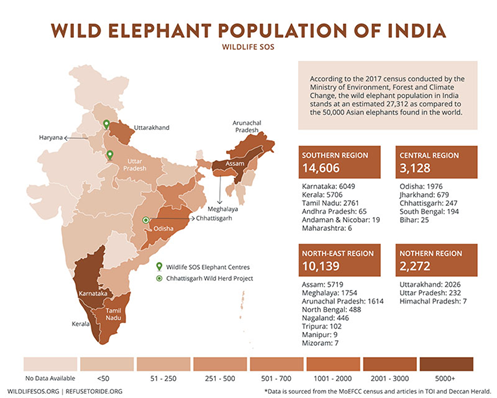

Context
Village residents known as hathi mitras or ‘friends of elephants’ dedicatedly track pachyderm movements to help prevent casualties and crop loss.
About
Human-Wildlife Conflict:
- Human-wildlife conflict is when encounters between humans and wildlife lead to negative results, such as loss of property, livelihoods, and even life.
- As human populations and demand for space continue to grow, people and wildlife are increasingly interacting and competing for resources, which can lead to increased human-wildlife conflict.
Tackling Human-Elephant Conflict (HEC) in Chhattisgarh:
- In September 2018, the Chhattisgarh Elephant project was initiated, focusing on the Mahasamund, Balodabazar, and Raipur districts of Chhattisgarh.
- The project had four core pillars:
- GPS radio-collaring the matriarch elephant of one herd,
- awareness and training of villagers about co-existing with elephants, and
- Studying the ranging pattern, seasonal ranges, and behavioral patterns of elephants.
- To come up with tangible solutions and a more nuanced understanding of HEC.

Hathi Mitras:
- The residents of villages affected by human-elephant conflict are engaged by the state forest department to dedicatedly track elephants, warn people about their movement and send updates in a Whatsapp group created for the purpose.
- Hathi mitras teach people how to avoid encounters during village-level meetings.
- Hathi mitras agree that most casualties occur due to a lack of knowledge about elephant behaviour and movement. Encounters mostly take place at night when visibility is low.
- Hathi mitras track elephants through the help of fresh dung and foot prints. Though this helps minimise encounters, crop loss is inevitable.


